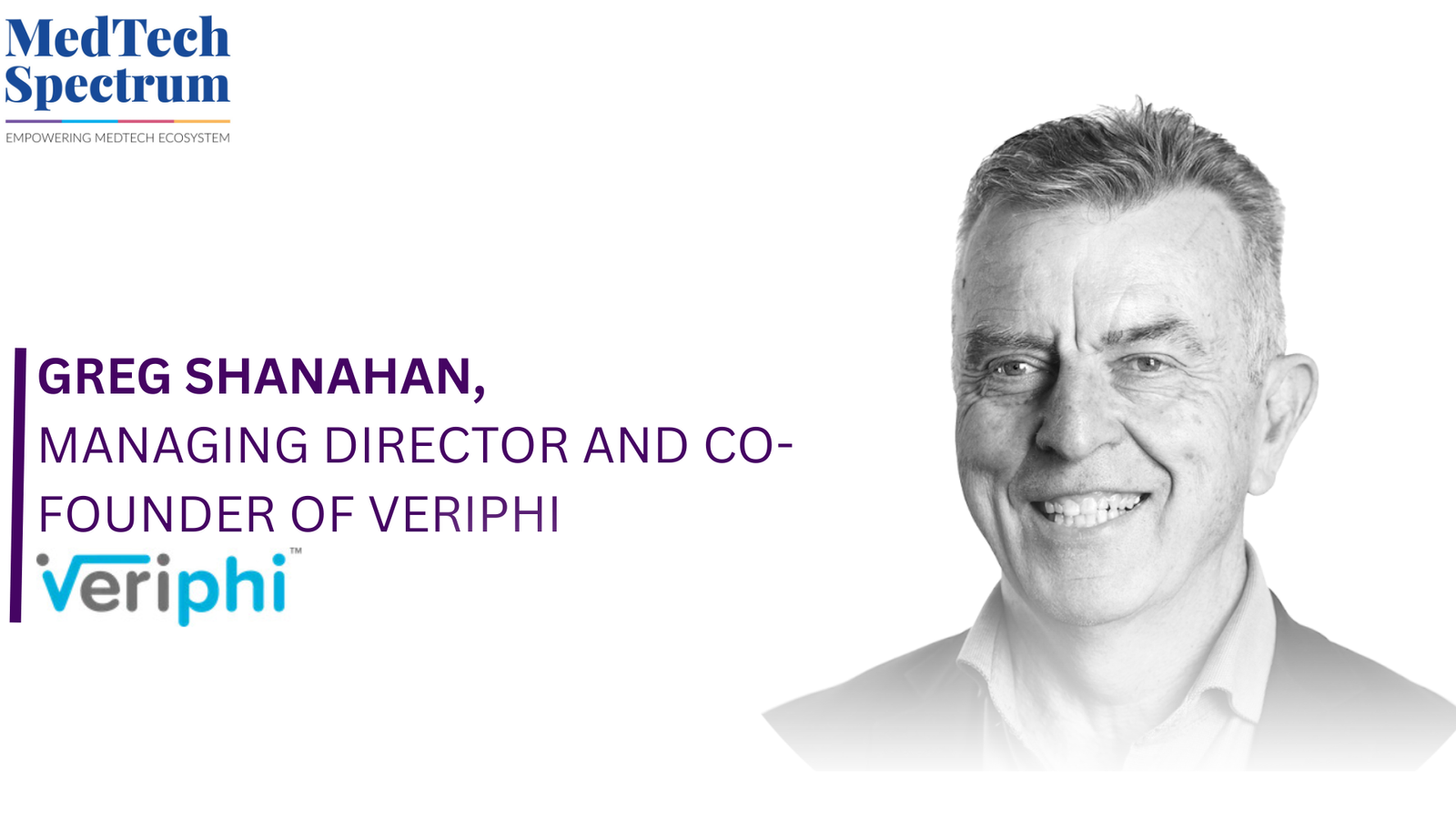MedTech Spectrum spoke to Greg Shanahan, Managing Director and Co-founder of Veriphi, about the global debut of its AI-powered, laser-based IV drug verification system at St Vincent’s Hospital Melbourne. As the first hospital in the world to integrate this technology into a sterile oncology compounding pharmacy, St Vincent’s is leading the way in medication safety innovation. The system enables real-time, non-invasive verification of drug identity and concentration—providing an added layer of assurance beyond traditional manual checks. This milestone marks a critical step forward in preventing medication errors and advancing technology-driven safeguards in high-risk clinical environments.
What prompted the collaboration with St Vincent’s Hospital Melbourne, and how did the pilot phase validate the value of Veriphi’s laser-based IV verification system?
- St Vincent’s approached Veriphi as they wanted to strengthen their quality control measures in the oncology pharmacy to improve patient safety
- Our initial product, an analyser that flushed the drugs through a flow cell, the hospital found too cumbersome to use. We therefore accelerated the development of our consumable analyser that uses a single use connector/cuvette making it far simpler and less time consuming to use.
- St Vincent’s have stated that already the Veriphi solution has been successful in detecting errors "The device has successfully identified errors before products reached patients and added a layer of safety that is objective and digital, reducing the cognitive burden on staff."
Can you elaborate on how Veriphi’s AI-driven technology integrates into existing compounding workflows without disrupting critical processes?
- Currently we use a transparent cell that has luer locks at either end so can be easily connected to IV bags and syringes. Currently a drug sample (around 0.7ml) is taken from the ampoule, bag or syringe and injected into the cell. The cell is then placed in the analyser and a result given in around 2 minutes once at temperature. The entire cycle time can 5-7minutes . The pharmacist is able to do other things while waiting for the result. Ultimately Veriphi will supply bags and syringes with features that allow the contents to be verified in seconds without drawing off a sample.
Given the successful identification of errors during the pilot, how do you envision scaling this solution to other high-risk departments like paediatrics and clinical trials?
- Our vision is for the drug to be able to be verified both immediately after preparation and immediately prior to administration . Our mission is to ensure that every IV administration is verified. We have a growing number of shareholders who are doctors or pharmacists. One doctor , who recently re invested in this round said, if you knew that you could verify an IV drug before administration…you probably should! Where you have multiple drugs being delivered, high impact medication and vulnerable patients the need is even greater. Studies have shown that ICU patients can be exposed to up to 1.7 medication errors on average per day. Paediatric cancer is obviously a high-risk area. We are giving some through to clinical trials in a clinical setting with some of our partners globally.
How does the system reduce cognitive load for pharmacy staff, and what feedback have you received from frontline clinicians about its usability and effectiveness?
- From our work at SVHM everyone at the oncology pharmacy when surveyed rated medication safety as a priority 5/5. They care deeply about the patients at St Vincents. This has a flipside that it is very distressing when they think they might have put patients at risk. Therefore, piece of mind is one of the most commonly used terms to describe the benefits of the Veriphi solution. This is a very big issue that came through clearly in our surveys. One of the team described our current analyser as a quantum leap on our previous version. Usage is growing rapidly which is great ! We see the results live and there is almost daily dialogue with the team. We have implemented many improvements from user feedback and continue to do so. Our goal is to ensure that our solution is reliable, trustworthy, very simple and enjoyable to use and cost effective.
- Outside of pharmacy our main clinical exposure has been in anaesthesia where the response has been very enthusiastic. The closer you get to the patient generally the more enthusiastic seems to be the response. In front line areas such as ED and ICU there are so many more distractions that can cause errors, than occur in the pharmacy where their sole focus is drug preparation.
- We feel very fortunate to be working with St Vincent’s beyond just the gratitude from the fact that they are our first customer. They are great people; committed transparent honest open and determined to provide the best care possible for their patients.
With early investment momentum building, what are your next strategic milestones for commercial growth and broader adoption across healthcare settings?
- Our immediate focus is on ensuring success with St Vincents.
- We have been approached by a number of other large healthcare organisations in Australia so our goal is to develop those further to build scale .
- With that scale building we plan to have presence in the US in 2026
- We focussed on compounding pharmacies at the advice of the US FDA as the fastest way to get into the market without the requirement for medical device approval. We will commence med device approvals in earnest to migrate from hospital pharmacies into the clinical areas Oncology, OR, ICU, and ED within the same hospital customers.
- Our initial goal is to be a $1B company. In US hospitals approx. 30 IV doses are administered every second. If we can make IV drugs delivery safer and cheaper, I think we have a very big opportunity to be more than that.
Chaitrali Gajendragadkar
chaitrali.gajendragadkar@mmactiv.com
Senior Officer - Media Integrations
MedTech Spectrum
www.medtechspectrum.com
